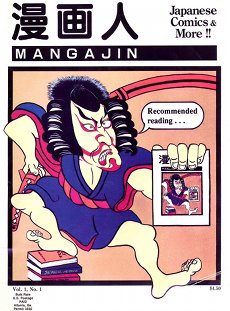Mangajin

First printed issue of Mangajin.
|
|
| Categories | Manga, Japanese culture, language learning |
|---|---|
| Year founded | 1988 |
| Final issue | December 1997 |
| Language | English |
| Website | mangajin.com |
Mangajin was a monthly English-language magazine for students of Japanese language and culture. It was distinct from many other magazines of its type in that it unabashedly embraced Japanese popular culture as a learning tool and a route towards rapid acclimation into Japanese society. Each issue featured selections from various popular manga translated into English with detailed cultural and linguistic commentary.
It was a unique language learning tool in that the manga that it excerpted showed the use of the language in various types of informal conversations. It would feature a few pages of manga with explanations of the grammar used and when that grammar/vocabulary combination might be appropriate. By contrast, most Japanese language textbooks for early students focus on formal versions of the language appropriate for business discussions.
The magazine ceased publication in December 1997 (issue 70) due to financial hardship. With increased worldwide interest in Japanese pop culture, the original manga publishers expected higher payments for their content, possibly beyond what was practical in this type of educational publication. Various books that collect many of the magazine's best features (as well as back issues of the magazine itself) are still highly prized by both self-taught and professionally tutored students of Japanese. An e-zine [1] also continues the tradition of the publication.
The name is a combination of the Japanese words for "comic" (manga, 漫画) and "person" (jin, 人), is a pun on a Japanese word for magazine (マガジン,magajin), and a double pun in that Gaijin (外人?, [ɡaidʑiɴ]) is a Japanese word for "foreigner," "non-Japanese", or "alien". Thus, it is "A Manga magazine for outsiders".
Mangajin began shaping in 1988 when businessman and translator Vaughan P. Simmons began making prototypes of a magazine that could combine Japanese popular culture, entertainment, and language learning into one. Simmons worked with clients from American and European companies and saw how successful they could be with the Japanese and learned the culture, which boosted up the motivation for Mangajin. When developing the concept, manga became an ideal solution with the medium being so large and attracting some of the best artists and writers. Manga also gives a big perspective on real Japanese society and how the language is spoken. Simmons started creating a "four-line-format" which shows the actual text as found in a Japanese manga, a romanization for pronunciation, a literal translation showing the structure of the expression, and an idiomatic English equivalent.
...
Wikipedia
